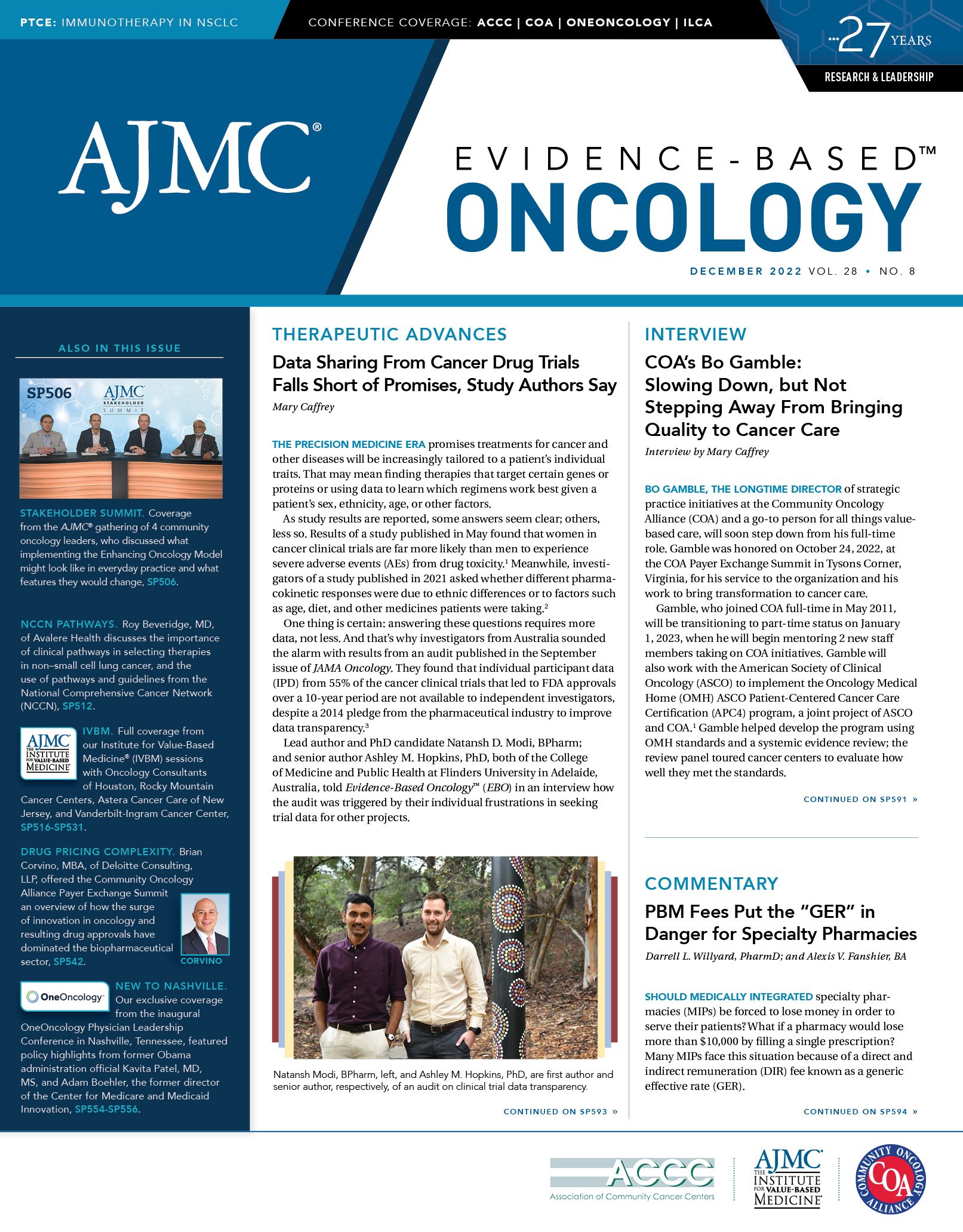- Center on Health Equity & Access
- Clinical
- Health Care Cost
- Health Care Delivery
- Insurance
- Policy
- Technology
- Value-Based Care
Innovation in a Time of Scarcity
We live in a time of life-changing innovation in cancer care that almost defies the imagination. Over the last 16 years, The Cancer Genome Atlas Program has added “2.5 petabytes of genomic, epigenomic, transcriptomic, and proteomic data” to our oncology knowledge database.1 From this massive repository of data, we are able to more effectively diagnose, risk-segment, and treat cancer patients. At the same time, the portfolio of therapeutics continues to grow at an unprecedented pace; in 2022, the FDA approved 13 new agents for the care of patients with oncologic and hematological diseases.2 In the aggregate, the US system of innovation creation and care delivery is achieving the highest aggregate survival rates in the world, resulting in more than 18 million cancer survivors in the United States alone.3 In a recent Washington Post opinion piece, David Goldhill made the plausible argument that a system like ours that competes to deliver the greatest level of innovation to patients provides profound benefits worldwide by advancing emerging surgical and cancer therapeutic technologies. The result is a life-dividend that is measured in millions of lives saved.
Yet in a time of such wonders there is cause for concern: This pace of innovation has come at a forbidding price. Total cancer care expenditures in the United States now exceed $156 billion, with patients and their families directly shouldering over $16 billion in out-of-pocket costs annually.4,5 In light of the rapid growth in health care costs and patient-borne cost-sharing, we are facing a potential breaking point. As policy makers, payers, and state and federal health care administrators focus increasingly on controlling costs, pressures are growing on physicians, health systems, and innovation leaders to do more with less. Toward that end, physicians face continued cuts to the Medicare Physician Fee Schedule, systems face de facto cuts (once inflation is factored in) to both outpatient and inpatient reimbursement, and the focus of legislators and administrators is on continuing to bend the cost curve, come hell or high water.
Initiatives like shifting toward value-based care payments and growing calls for greater price transparency represent well-intentioned forays toward cost containment but risk being willfully blind to the fact that reducing costs without reducing the value of care for vulnerable cancer patients is harder than it seems. “Value” remains a poorly defined word in most policy edicts and our system suffers because of the resulting lack of clarity and specificity. Brute-force methods that may produce effective cost containment in the domain of primary care (capitated payments, narrow networks, shifts toward care in less intensive settings, and greater reliance on non-physician providers) may be a poor fit for a cancer care innovation delivery model that relies increasingly on interpretation of complex genomic testing data, navigation of a complex portfolio of targeted therapeutics, integration of hundreds of advanced therapeutic interventional trials, and effective management of the emotional dimensions of caring for patients with a potentially life-ending illness.
So how do we begin? I think we need to come to the realization that less is not always more and that models that seek efficiency through strangulation can undermine the best capacities of our current cancer care system. We should commit to more careful definitions of what represents high value for cancer patients and their families and develop transparent economic systems that incentivize better stewarded care delivery within that model.
We should also avoid making the false choice of undervaluing innovation. To embrace a mindset of scarcity at a time of profound patient need would be reckless. Sometimes the best way forward is to pause, think, and then resume with deeper understanding of where to go next.
References
1. The Cancer Genome Atlas. National Cancer Institute. Accessed December 4, 2022. https://bit.ly/3iHvME3
2. Novel drug approvals for 2022. US Food and Drug Administration. Updated December 2, 2022. Accessed December 4, 2044. https://bit.ly/3Hf7k7k
3. Miller KD, Nogueira L, Devasia T, et al. Cancer treatment and survivorship statistics, 2022. CA Cancer J Clin. 2022;72(5):409-436. doi: 10.3322/caac.21731
4. Fang CY, Frosch ZAK. Understanding and addressing cancer care costs in the United States. JAMA Netw Open. 2021;4(10):e2127964. doi: 10.1001/jamanetworkopen.2021.27964
5. Kuehn BM. Cancer care creates substantial costs for US patients. JAMA. 2021;326(22):2251. doi: 10.1001/jama.2021.21119

AI in Health Care: Balancing Governance, Innovation, and Trust
September 2nd 2025In this conversation with Reuben Daniel, associate vice president of artificial intelligence at UPMC Health Plan, we dive into how UPMC Health Plan builds trust with providers and members, discuss challenges of scaling AI effectively, and hear about concrete examples of AI's positive impact.
Listen
